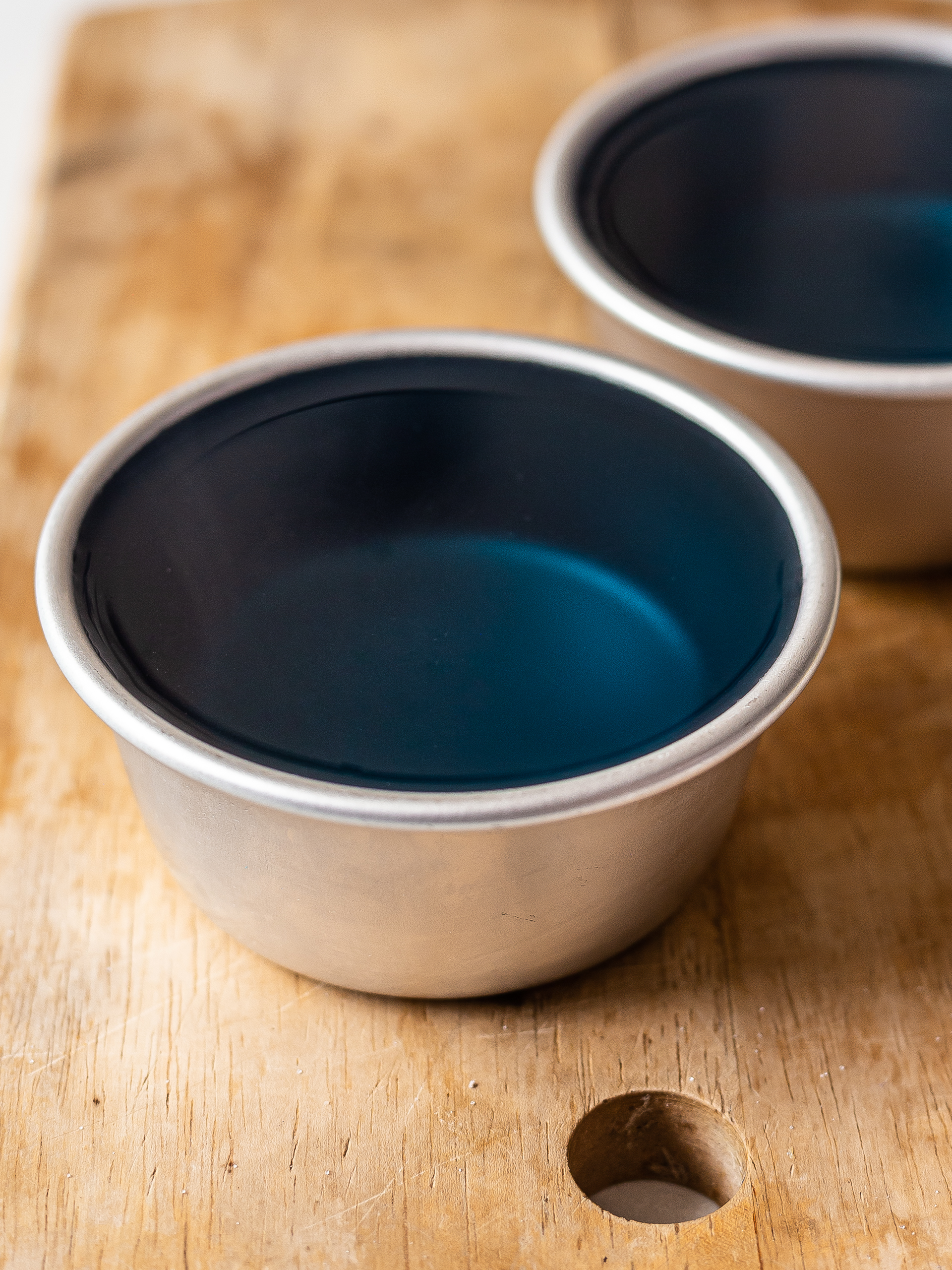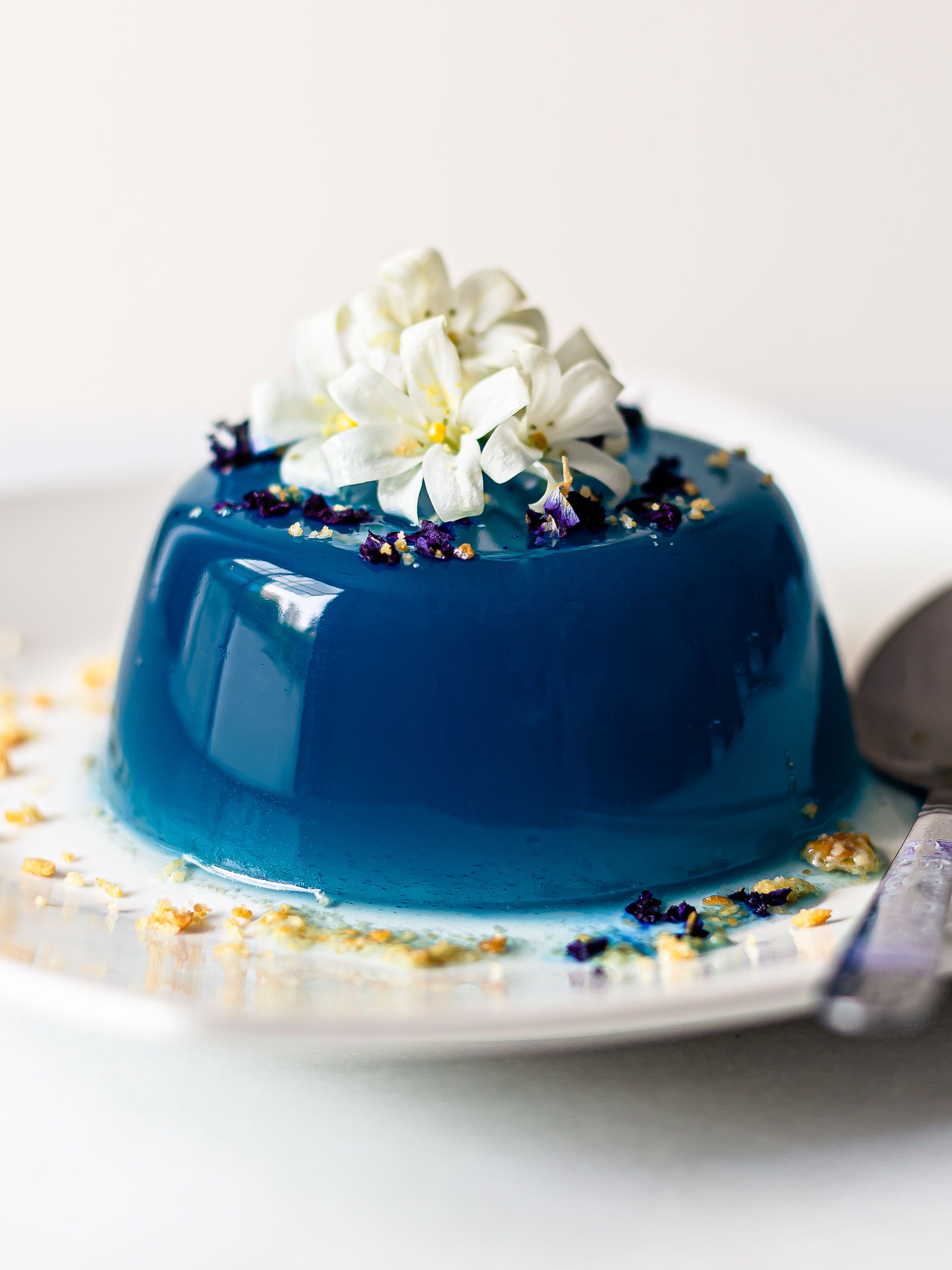Today, we want to show you how to use butterfly pea flowers to make a pretty and delicious blue jelly. It's a quick and easy dessert you can make ahead of time and serve your guests with some fancy toppings. We're sure everyone will love it!
All you need are three simple ingredients: butterfly pea flowers, a sweetener, and a gelling agent, like agar or gelatine powder. That's it!
The recipe is based on the basic jelly (or jello) dessert: sweetened and flavoured water jellified with gelatine.
We used butterfly pea flowers to make blue tea (also called blue pea tea) and sweetened it with sugar-free erythritol. Then, we cooked it with agar powder, and finally, we let the blue jelly set in the fridge in moulds.
Let's quickly take a look at these three ingredients.
Erythritol is a natural sweetener that tastes like sugar but has no calories — great for sugar-free desserts. But, if you prefer, you can swap erythritol with sugar in 1:1 ratio.
Agar powder is a vegan alternative to gelatine that gets activated when you cook it and sets in the fridge when it cools down. If you want to use agar flakes or vegan gelatine, check our tips in the recipe below.
Butterfly pea flowers are beautiful blue flowers found in Southeast Asia.
It's a Thai tradition to use butterfly pea flowers to make blue tea. But these wonderful flowers are widely used in many other recipes across Southeast Asia like drinks, sweets, desserts, and more.
When you steep butterfly pea flowers in hot water or milk, they release their deep blue pigments, giving a wonderful blue hue to your dishes. They taste earthy, grassy, and delicately floral — similar to matcha but sweeter.
You can find dried butterfly pea flowers at your local Asian food store or online. You can also buy blue pea flower powder, sometimes called "blue matcha". But no matter what you can find, we'll show you to prepare the blue jelly with dried or powdered flowers!
Once ready, flip the blue pea jelly on serving plates and garnish it as you like it the most or follow our toppings ideas below. It's a light and fresh dessert that tastes sweet and floral and looks so pretty!
And if you're wondering what else you could make with butterfly pea flowers, check out this spongy blue cake, blue pea cheesecake, and butterfly pea bubble tea. You'll love them!
Ingredients
| Water | 680 mL |
| Agar Agar Powder | 5 g |
| Butterfly Pea Flowers (or powder, see recipe) | 2 tbsp |
| Sugar-Free Erythritol (or regular sugar) | 120 g |
Step 1
Add the given water to a pot.
Tip in the agar-agar powder a bit at a time to avoid lumps, and stir well with a spoon until it's completely dissolved.
Make sure you weigh the agar powder accurately, as even a small amount can affect the final result.
You can swap agar powder with the same amount of gelatine powder (vegan if needed). If you want to use agar flakes instead, you need to double the amount — but always check the package instructions.
Next, stir in the sugar-free sweetener erythritol (or regular sugar if you don't need the jelly to be sugar-free), followed by dried butterfly pea flowers.
You can substitute the flowers with blue pea powder (also called "blue matcha"), using half a teaspoon for every 2 tablespoons of flowers.
Now, bring all to a gentle boil and simmer over low heat while stirring for 3 minutes to activate the agar-agar.

Step 2
Remove the flowers, and skim off any foam or flower bits if needed.
You should now have a deep blue butterfly pea jelly mix.
Divide it among serving pudding tins or silicone moulds, filling them to the top.
If you don't have pudding moulds, you can use muffin tins or opt for a cake tin and then slice the blue jelly into squares or rectangles.
Allow the blue pea jellies to cool down at room temperature for 10 minutes, and then let them harden in the fridge for at least one hour.
The jellies are ready when the surface feels set and slightly bouncy when poked.

Step 3
Once ready, gently loosen the jellies up from their moulds.
If you are not using silicone moulds, run a silicone spatula along the edges of the jelly tin and push it all the way down to the bottom to create an air pocket.
Then, carefully flip the jelly onto a dessert plate and serve.
Your beautiful butterfly pea jelly is ready!
You can garnish it with fresh or dried flowers, coconut flakes, chopped fruit, or crumbled cookies.
And why not serve it alongside a scoop of ice cream? Try it with our sugar-free mango sorbet or fragrant lavender ice cream.

Tips
If you prepared the blue jelly in a large jelly mould or cake tin, you can flip it onto a plate and slice it into cubes. Then, make a Thai-style jelly dessert by serving the jelly pieces in cups or glasses and drizzling them with fresh coconut milk. So good!
